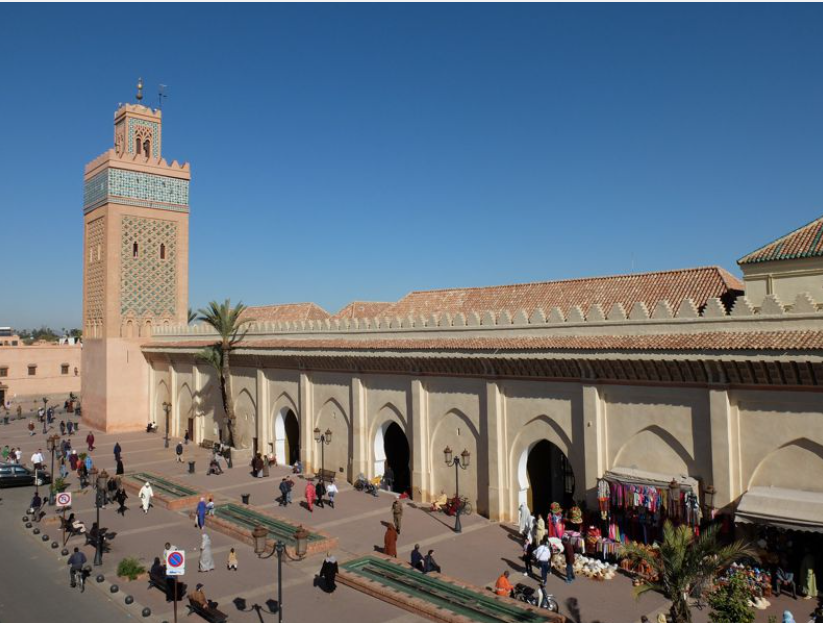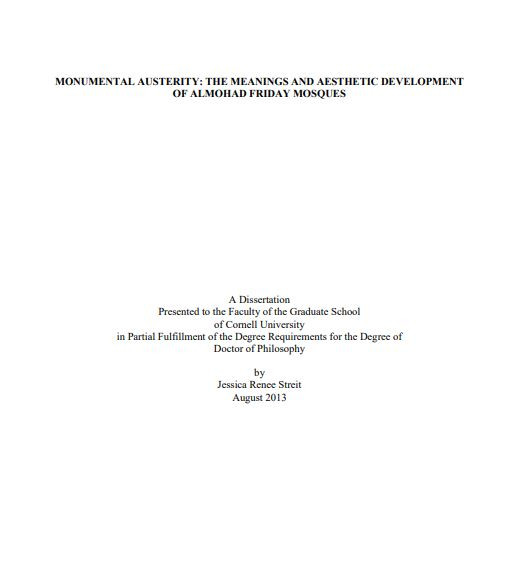

This dissertation examines four twelfth-century Almohad congregational mosques located in centers of spiritual or political power. Previous analyses of Almohad religious architecture are overwhelmingly stylistic and tend to simply attribute the buildings’ markedly austere aesthetic to the Almohads’ so-called fundamentalist doctrine. Ironically, the thorough compendium of the buildings’ physical characteristics produced by this approach belies such a monolithic interpretation; indeed, variations in the mosques’ ornamental programs challenge the idea that Almohad aesthetics were a static response to an unchanging ideology. This study demonstrates that Almohad architecture is a dynamic and complex response to both the difficulties involved in maintaining an empire and the spiritual inclinations of its patrons. As such, it argues that each successive building underwent revisions that were tailored to its religious and political environment. In this way, it constitutes the fully contextualized interpretation of both individual Almohad mosques and Almohad aesthetics. After its introduction, this dissertation’s second chapter argues that the two mosques sponsored by the first Almohad caliph sent a message of political and religious authority to their rivals. The two buildings’ spare, abstract ornamental system emphasized the basic dogma upon which Almohad political legitimacy was predicated, even as it distinguished Almohad mosques from the ornate sanctuaries of the Almoravids. Chapter Three turns to the mosque built by the second Almohad caliph in the Iberian capital of Seville. After demonstrating how the building’s dimensions and privileged location broadcasted Almohad authority to an ambivalent Andalusian audience, an analysis of religious works by two court philosophers, Ibn Ṭufayl and Ibn Rushd, iii helps to decode its complex ornamental program. Chapter Four examines the unfinished Friday mosque begun by the third Almohad caliph in Rabat. Its overwhelming dimensions and new typology dovetail with a recent theory that the caliph wished to make Rabat his new Maghribī capital, while the mosque’s revised ornamental program reflects the caliph’s desire to renew the political and religious foundations upon which Almohad political legitimacy rested. Chapter Five compares the Almohad mosques to the Cistercian convent of Las Huelgas, located in Castile, before the conclusion situates Almohad architecture within a broader Mediterranean context.
Streit, J. R., ‘Monumental austerity: The meanings and aesthetic development of Almohad Friday mosques’ (Unpublished doctoral thesis: Cornell University, 2013).
I agree to the terms outlined below:
You agree to upload and assign Mosqpedia Database the rights to use the content worldwide and in perpetuity across all current and future media platforms. Mosqpedia Database may edit, copy, adapt and translate your contribution.
The content will be distributed under the Creative Commons Attribution-Deed – Attribution-NonCommercial-NoDerivatives 4.0 International – Creative Commons
All data will be stored in line with data protection regulations.